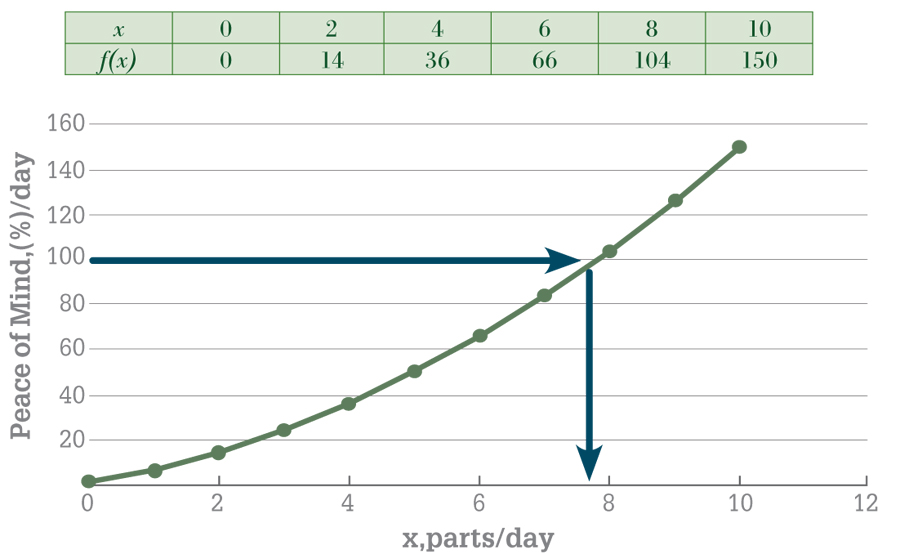January/February 2020
Concepts
The P-equation That Really Counts:
Lessons Learned for Peace of Mind
BY WENDY H. WONG, P.E.
 After many years in a successful career as a process engineer, raising two boys, founding and running a nonprofit serving impoverished kids and women in Tibet for over a decade, and even surviving several manpower rightsizing reductions and restructuring at my company, I still find myself struggling to come to terms with the new challenges and life events recently thrown at me. At the end of 2018, I was diagnosed with breast cancer, and in September 2019, my oldest son was diagnosed with retrograde amnesia. I recognize that life is full of ups and downs, but do I have the skills to deal with all these new life challenges positively and hopefully resolve the issues along the way?
After many years in a successful career as a process engineer, raising two boys, founding and running a nonprofit serving impoverished kids and women in Tibet for over a decade, and even surviving several manpower rightsizing reductions and restructuring at my company, I still find myself struggling to come to terms with the new challenges and life events recently thrown at me. At the end of 2018, I was diagnosed with breast cancer, and in September 2019, my oldest son was diagnosed with retrograde amnesia. I recognize that life is full of ups and downs, but do I have the skills to deal with all these new life challenges positively and hopefully resolve the issues along the way?
As a professional engineer, I know that in general, engineers’ left brain works wonderfully at understanding technical concepts, analysis, and logic. However, we often lack the artistic expression, the creativity, and the intuition performed by the right brain. Like any muscle of our body, engineers are daily training and using our left side of the brain, often neglecting or underserving the expressive right. I felt frustrated, having no equations or manuals to solve the problems in life’s challenges. I wondered where the operation and maintenance manual was for a happy life. As engineers, we are trained to create a list of lessons learned so we can avoid similar mistakes in the future. What are the lessons learned from dealing with all the past crises? Knowing that I needed to stay positive and calm to deal with the current issues, I came up with an equation that I use whenever I am stuck feeling hopeless or helpless. I hope this article can help those needing to cope with an unpredictable life crisis.
P-equation:
Peace of Mind is dependent upon a minimum of four elements: patience, pause, persistence, and positivity. Peace of Mind can be written as the summation of these P-elements.
Peace of Mind, P – equation =
PATIENCE+PAUSE- PERSISTENCE+POSITIVITY 1
Where x = variable, parts/day
PATIENCE
The ability to accept or tolerate delays, problems, or suffering without becoming annoyed or anxious. I think at minimum, twice (2x) the amount of patience is recommended, or adjust the quantity of patience as required. PATIENCE = 2x.
PAUSE
A short mental break, meditation, mindful of the present moment, a short nap, or even a brief walk. Pause can range from one to four times every day. Each PAUSE session can be as short as 10 minutes. Multiple smaller pauses each day are helpful to let yourself relax and be present. PAUSE = 3x
PERSISTENCE
Continuing firmly or obstinately in a course of action despite difficulty or opposition. The opposite of persistence is flexibility and open-mindedness. We all know being flexible and open-minded brings new experiences and creativity. Therefore, let the persistence approach zero to increase Peace of Mind. Sometimes it is ok to let the crisis run its course. Time will heal with an open mind.
PERSISTENCE = lim x
x→0
POSITIVITY
The practice of being positive or optimistic in attitude (i.e., hope). Be positive and hopeful, x2, to reach maximum Peace of Mind. When all seems to fail, continue to stay positive and hope for the best because it is a fact that tomorrow is unknown to each of us. POSITIVITY = x2
As a result, the P-equation can be re-written as
P – equation,Peace of Mind = SUM of
[PATIENCE +PAUSE-PERSISTENCE+POSITIVITY] 2

Example: Assuming the mind is flexible
(i.e., setting PERSISTENCE to zero)

Ideally, our goal is to achieve Peace of Mind all the time (i.e., 100% every day). By plotting Equation 4 into a graph, as shown above, Peace of Mind reaches 100 when x is 7.8 parts/day while remaining flexible and open minded.

Therefore,
PATIENCE = 2x = 16 parts/day,
PAUSE = 3x = 23 parts/day,
PERSISTENCE = 0 (open mind) and
POSITIVITY = x2 = 61 parts/day
The result above shows a considerable amount of effort needed for 100% Peace of Mind at all times. However, we may reduce each P-element by 33%, considering we generally stay awake 16 hours each day and spend the remaining eight hours sleeping. Hence, for one to obtain 100% Peace of Mind every day, the minimum effort required would be:
PATIENCE = 11 parts/day,
PAUSE = 15 parts/day,
PERSISTENCE = 0 (open mind) and
POSITIVITY = 41 parts/day
It also proves to us that having peace of mind is not easy because it requires 41 parts/day of positivity, 15 parts/day of pauses, and 11 parts/day of patience. Peace of Mind does not come naturally. It is a learned behavior, a skill that requires regular practice.
Conclusion
With the lessons learned from past experiences over the years, plus the feedback from family and friends, I think the Peace-of-Mind, P-equation is a cumulative effort encompassing at least four P-elements (PATIENCE, PAUSE, (-)PERSISTENCE and POSITIVITY), which may take many years of practice, or a lifetime, to master. The biggest element, in my opinion, is positivity and hope that keeps us going forward without giving up.
Keep in mind, achieving Peace of Mind is a skill that requires regular practice to be good at it. The rate to achieve Peace of Mind depends on finding a balanced mix of P-elements and perhaps other elements to suit your personality and situation. Learning these soft skills would better equip us to handle life’s obstacles, as well as ground us in our daily lives.
So, what does your P-equation look like?
Wendy Wong, P.E., is a senior process engineer supporting Infrastructure of SNC Lavalin. She has 26 years of experience in chemical and water treatment processes for power, oil and gas, and pharmaceutical industries. Wong is also a founder of a nonprofit organization for EducationAtElevation.org and completed a high elevation running water system in Tibet. She was honored as “An Unsung Hero of Compassion” in 2014 by His Holiness the Dalai Lama.
Recommended Readings
Here is a list of recommended books for meditation that I find very helpful and with logical approaches that are also not sectarian but are worth checking out.
- Practical Meditation: A Simple Step-by-Step Guide by Giovanni Dienstmann, 2018. Website by the same author, www.LiveAndDare.com.
- Sitting Still Like a Frog by Eline Snel, 2013. This book is intended for a younger audience, and its concepts and applications are easy to understand. It also includes a useful mobile app (www.elinesnel.com/en).


